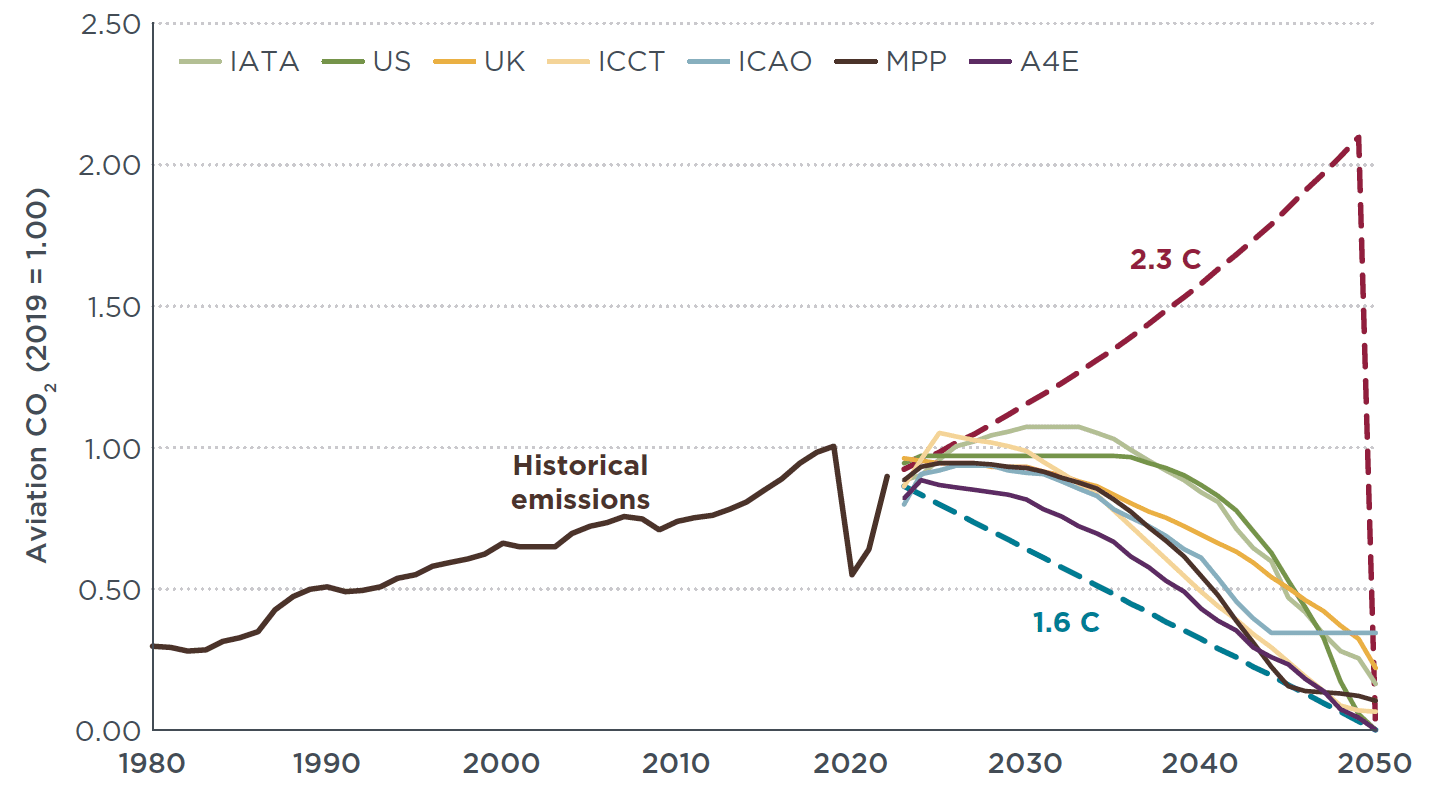Policy update
ICAO’s 2050 net-zero CO2 goal for international aviation
In October 2022, member states of the International Civil Aviation Organization (ICAO) agreed to a long-term aspirational goal (LTAG) of net-zero carbon dioxide (CO2) emissions from aviation by 2050. The agreement signals a turn away from merely offsetting emissions and toward measures to dramatically reduce CO2 from planes and fuels (Figure). It directs the ICAO Council to take the following actions:
- Develop and update guidance on the application of control policies and measures for member states, including operational measures, and monitor progress in implementing State Action Plans (SAPs),
- Create finance mechanisms to support decarbonization initiatives in developing countries,
- Further develop tools to quantify aviation’s GHG emissions, including the ICAO Carbon Emissions Calculator, and
- Identify the potential impacts of climate change on international aviation and related infrastructure and determine appropriate adaptation measures.
The agreement represents a shift away from previous ICAO climate governance. It favors action to reduce CO2 from planes and fuels directly, rather than mitigating emissions through the purchase of emissions credit or offsets from other sectors. It envisions deep cuts in aviation CO2, to near-zero levels by 2050, which ICAO estimates will cost up to $4 trillion US. And it invites member states to regulate aviation emissions themselves, rather than relying on ICAO to develop minimum global standards covering all countries.
Despite these strengths, the agreement does not assign individual targets to states, so neither countries nor airlines have a direct obligation to reduce emissions. Nor does it set intermediate goals (e.g., 2030 and 2040 targets) that would ensure that airlines do not consume their share of the global carbon budget too quickly. Finally, short-lived climate pollutants like nitrogen oxides, black carbon, water vapor, and contrail/cirrus are not included. These non-CO2 elements could warm the planet by twice as much as CO2 alone; near-term action to reduce their presence in the atmosphere could halt further warming from aviation.
If global airlines succeed in achieving a net-zero CO2 goal in 2050, that would be consistent with between a 1.6 and 2.3C temperature pathways, assuming that aviation doesn’t increase its share of a global carbon budget over time (Figure). Emission trajectories under various net-zero technology roadmaps for aviation are shown as colored lines.

Figure. Historical and projected CO2 emissions from aviation, 1980 to 2050, normalized to 2019
Read more: ICSA Views on a Long-Term Aspirational Goal for International Aviation CO2 Emissions Reductions
